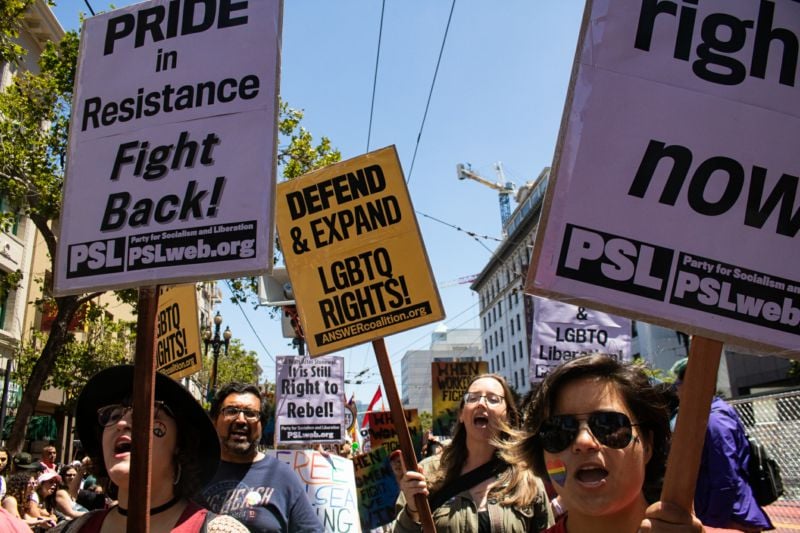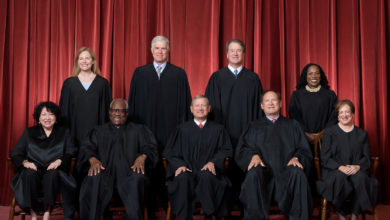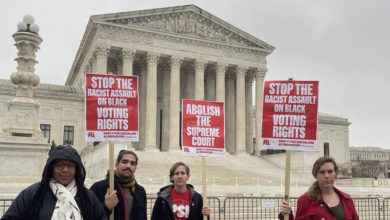Last year, the U.S. Supreme Court finally banned the Jim Crow practice of allowing non-unanimous juries to convict a defendant of a crime — the Ramos v. Louisiana decision. On Monday, however, the same Supreme Court refused to make its recent ban retroactive when ruling in a case known as Edward v. Vannoy. This allows the mountain of jury verdicts produced under these Jim Crow laws to stand.
Thousands of inmates in Louisiana and Oregon – the two states that permitted this practice – who were found guilty by divided juries and who had exhausted their appeals will ridiculously not have their cases reopened.
Monday’s decision came in the case of Thedrick Edwards, a Black man serving life in Louisiana after being convicted by a split jury in 2007. During jury selection the prosecution used 10 of their 11 peremptory strikes to exclude Black jurors, leaving the jury with one Black member. The verdict on some counts was 10-2 and 10-1 on others, with the Black juror voting to acquit on all charges. In 48 states this would have resulted in a non-conviction. But in Louisiana, where non-unanimous convictions were allowed until the state’s constitution was amended in 2018, Edwards was imprisoned for life.
In Louisiana, the incarceration capitol of the United States, even though Black people make up one-third of the state’s population, they constitute two-thirds of state prisoners. A 2018 study by Louisiana’s largest daily, The Advocate, found that of the cases they researched 43 percent of Black defendants were convicted by non-unanimous verdicts.
Louisiana’s non-unanimous (or split jury) law was part of a slew of Jim Crow measures enacted following Reconstruction, when a white supremacist counterrevolution was on the march.
The 14th Amendment to the U.S. Constitution, as one of the three Reconstruction amendments, forced states to include Black people in juries. Faced with this Constitutional requirement, Louisiana found a workaround: the non-unanimous verdict. If the state could no longer outright ban Black jurors, it would make sure the number of Black jurors would be few, and that they could be outvoted by white majorities on the jury.
Thus, in 1880, three years after the withdrawal of federal troops, Louisiana’s legislature changed its unanimous verdict standard to a non-unanimous one, making it possible to convict defendants 9-3 (later 10-2). It was a way to prevent Black people from influencing verdicts. The result was more convictions, especially of freed Black people, which fed a growing convict leasing system of forced labor.
All of this was ratified by the state’s 1898 constitutional convention, famous for disenfranchising Black voters.
Louisiana became one of two states in the Jim Crow era to allow non-unanimous decisions in criminal cases. The other was Oregon.
Once home to the largest KKK organization west of the Mississippi River, Oregon passed a constitutional amendment in 1934 allowing non-unanimous verdicts of 10-2. This rule was devised to systematically exclude minority Black, Jewish and Asian residents, as well as southern and eastern European immigrants, from influencing verdicts.
A 1972 Supreme Court decision upheld the laws in both states (Apodaca v. Oregon). That ruling was finally discarded with the Supreme Court’s 2020 Ramos decision.
For years, Thedrick Edwards had been challenging his conviction for the same reasons as Evangelisto Ramos, arguing that non-unanimous jury laws were Jim Crow laws that allowed for racial discrimination and violation of due process.
After the Ramos ruling, Edwards changed his petition to the Supreme Court, asking that in order to address the fairness and accuracy of previous non-unanimous convictions, the Ramos decision be applied retroactively, allowing old convictions to be vacated and settled cases re-tried.
However, in a 6-3 ruling, the ultra-right-wing Supreme Court claimed that the elimination of Jim Crow jury laws did not constitute a “watershed,” the threshold that changes in criminal procedure have to meet to be applied retroactively. In other words, six out of nine justices, all handpicked by millionaires in the Senate, were able to deprive thousands of people convicted under Jim Crow jury laws the right to have their cases retried because they did not consider it a “watershed.”
The Supreme Court decision leaves open the option for state lawmakers and district attorneys to take action on their own. The courts and other elements of the criminal “justice” system are not immune from mass political pressure. The movement against racist mass incarceration will fight on and can still win justice for victims of non-unanimous jury verdicts.






